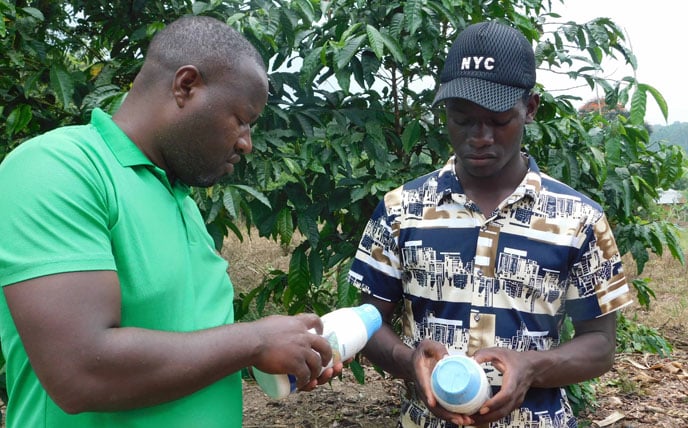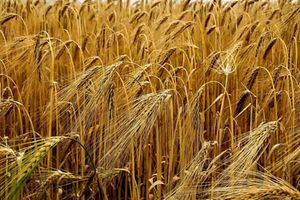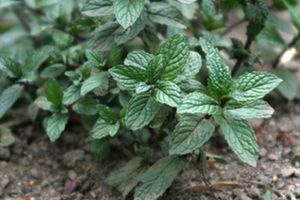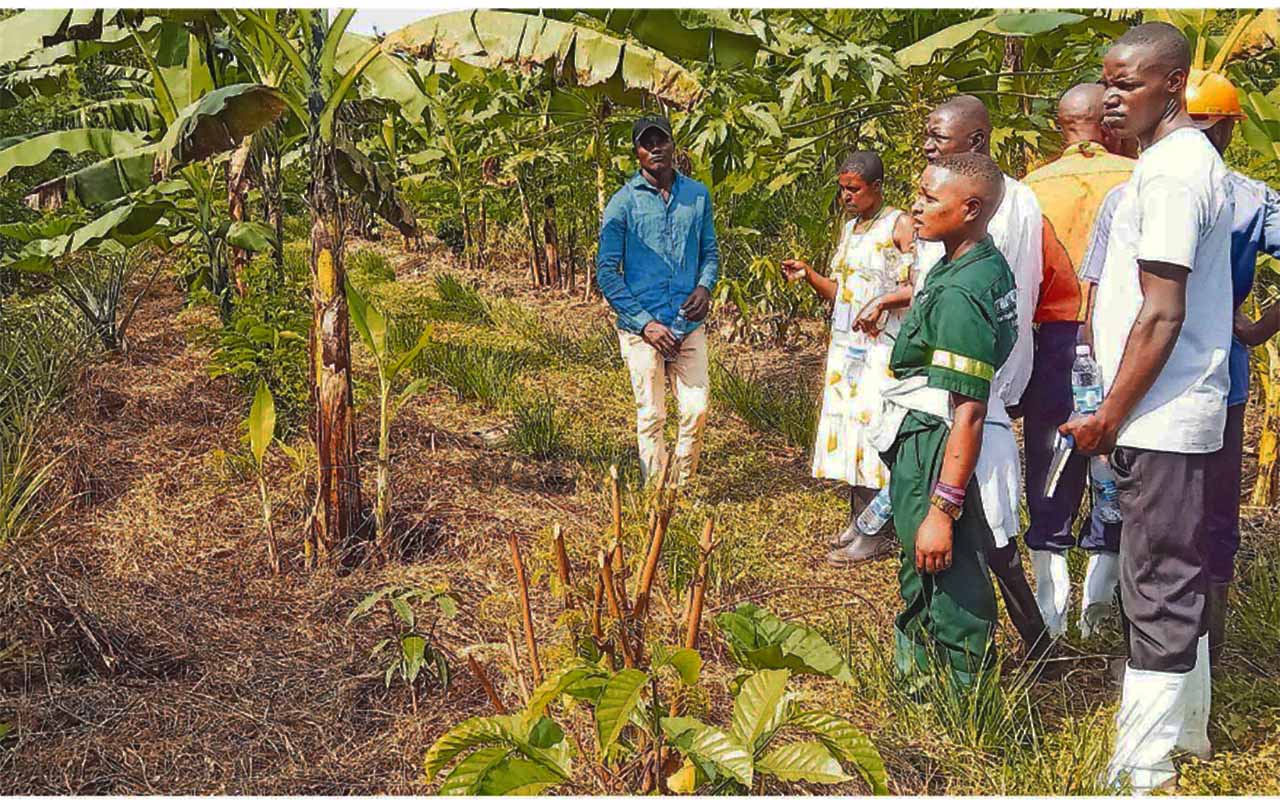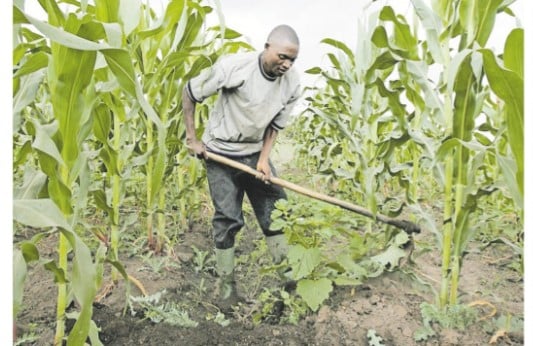
A maize farmer weeds his garden with a hand hoe. PHOTO | COURTESY
By their very nature, weeds tend to thrive at the expense of edible or ornamental crops. They provide competition for space, nutrients, water and light, although how seriously they will affect a crop depends on a number of factors. Some crops have greater resistance than others.
Smaller, slower growing seedlings are more likely to be overwhelmed than those that are larger and more vigorous.
Hosts pests and diseases
Weeds can also host pests and diseases that spread to cultivated crops. That’s why they should be managed or controlled. Weed management varies according to plant life cycles, infestation size, environmental parameters and management objectives.
Weed management requires proper plant identification, selection of effective methods and monitoring the effects over time. Prevention is the most essential part of weed management. Once a noxious weed infestation becomes established, any increase in size or density creates increasingly more expensive management efforts. Awareness of weed seed sources and plant identification is a must.
Spread diseases
Weed seeds can be spread from neighbouring farms, adjacent roads and trails. Direct sources often are livestock, manure, seeds, hay, vehicles, tractors and equipment. Disturbed ground is most vulnerable to weed invasion where competitive vegetation has been removed, with no management measures, weeds are likely to appear.
Early detection and rapid response saves time and money. Aggressive management action on small, newly established infestations can result in eradication – prevention is better than cure.
Control methods
There are a number of weed control methods, but we would like to highlight chemical weed control (use of herbicides). Herbicides, which can be in liquid or granular forms, are divided into several classifications. These are:
•Selective: A selective herbicide controls certain plant species without seriously affecting the growth of other plant species. The majority of herbicides used are selective.
•Non-selective: Non-selective herbicides control green plants regardless of species. These are generally used to kill all plants, such as in the renovation or establishment of a new turf area, for spot treatment, pre-plant application, minimum/zero tillage or as a trimming material along sidewalks.
•Contact: Contact herbicides affect only the portion of green plant tissue that is contacted by the herbicide spray. These herbicides are not translocated or moved in the vascular system of plants.
Therefore, these will not kill underground plant parts, such as rhizomes or tubers. Contact herbicides often require repeat applications to kill regrowth from these underground plant parts.
•Systemic: Systemic herbicides are translocated in the plant’s vascular system. The vascular system transports the nutrients and water necessary for normal growth and development. Systemic herbicides generally are slow acting and kill plants over a period of days.
Herbicide application provides the most-effective and time-efficient method of managing weeds. Along with herbicide use is user responsibility and compliance with all product label requirements for handling, use, and clean-up.
Chemical weed control
Herbicide application can give the most effective and time-efficient method of managing weeds. Numerous herbicides are obtainable that provide effective weed control and are selective so that grasses are not injured.
Along with herbicide use, user responsibility and compliance with all product label conditions for herbicide handling, use and clean-up are required.
Chemical weed control refers to any method that involves the application of a chemical (herbicide) to weeds or soil to control the germination or growth of the weed species. In economic terms, chemical control of weeds is a large industry and there are scores of examples of chemical weed control products.
Biological weed control
The goal of biological control in vegetable crops is not eradication but the use of living agents to suppress vigour and spread of weeds.
Such agents can be insects, bacteria, fungi or grazing animals, for example, sheep, goats, cattle or horses. Grazing produces results similar to mowing and biological control is most commonly thought of as “insect biocontrol”.
Biological weed control mainly refers to any technique that involves the use of natural enemies of weed plants to control the germination of weed seeds or to control the spread of established plants.
This is a rapidly expanding area of weed control with several examples. Examples of biological weed control contain sheep to control tansy ragwort or leafy spurge, cinnabar moth and the tansy flea beetle to control tansy ragwort.
Crop competition
Crop competition is one of the cheapest and useful methods a vegetable producer can use to control weeds.
Competition makes full use of one of the oldest laws of nature and survival of the fittest. Some of the competitive crops are closely planted bush green bean, cucumber, winter squash, and sweet potato. Some vegetables, sweet corn, pole bean, watermelon and transplanted tomato, pepper, and cabbage are intermediate. Slow or short growing crops for example as carrot, onion, okra, and direct-seeded tomato, pepper, and cabbage are considered non-competitive.
Weeds are naturally very strong competitors. If not, they would fail nature’s test of “survival of the fittest” and those weeds that can best compete always tend to dominate.
Precaution
Always read the label and keep in mind that it is legally binding. Herbicides are applied by spot spraying - single nozzle application targeting individual plants, or broadcast spraying - multiple nozzles covering an entire area.
Whatever method is used, calibration of spray equipment (gallons per acre spray output) is essential for accurate delivery and mixing calculations.
Estimating or guessing sprayer output can lead to misapplication which either injures non-target plants or results in failure to control the targeted weed.
